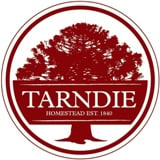Polwarth Sheep
Australia's first breed of sheep has a long story of innovation and adaption - and the creativity continues with you.
From the early 1800s, the world started to need greater quantities of wool. Factories were developed in Europe to process it, and distant colonial lands grew the wool on vast runs.
Australia is well suited to sheep production with its vast, dry conditions. Merinos were imported from Spain and Africa as early as 1790 and spread through the warm, dry lands of New South Wales.
But in the southern parts - the cooler and damper areas of Australia - the original Merinos weren't coping with the conditions, resulting with an inferior fleece.
Growing up in Australia, Richard Dennis knew the environment. He realised the traditional Merino needed a boost to adapt to its antipodean lifestyle.
So in the mid 1800s on his family's farm at Tarndwarncoort, Richard crossed Saxon Merino sheep with a strong wooled British breed called Lincoln.
This progeny was then joined back to the Merino and bred to a fixed type by 1880.
These sheep were named Dennis Comebacks and later renamed Polwarth after the district it was founded in in southern Australia.
The Polwarth is Australia’s first breed of sheep, and one that reflects the environment it is from.
Polwarth sheep are now found throughout the world in climates that are similar to the breed's source at Tarndwarncoort.
It is now referred to as a "conservation" breed. With the direct descendants of this breed still on the farm where it all started, we are delighted that you have chosen to help us conserve this heritage.
